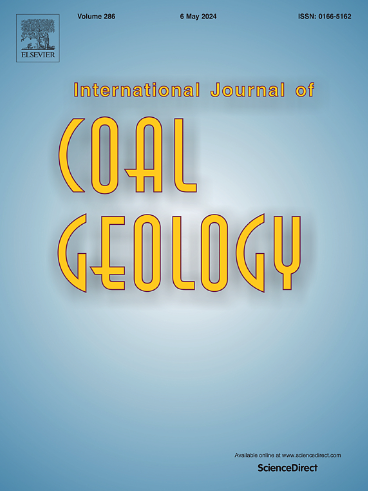Industrial and mining impacts on the organic matter of soils in a protected area of the Central Portuguese Coast: A petrographic and geochemical approach
IF 5.7
2区 工程技术
Q2 ENERGY & FUELS
引用次数: 0
Abstract
Long-term industrial operations fueled by coal and oil have the potential to significantly impact surrounding ecosystems, particularly in the past when environmental regulations were less stringent. In this study, organic contamination was investigated in soils surrounding a former industrial complex and coal mining area on the Portuguese Atlantic coastline, active from the 19th century through the early 21st century. This area is currently included in the Natural Monument of Cabo Mondego, which highlights concerns regarding its environmental quality. Surface soil samples were investigated through a multi-technique approach using organic petrography, an uncommon yet powerful tool that provides unequivocal evidence of contaminants, and geochemical methods to identify sources of fossil fuel-derived contaminants. Results indicate that most of the samples exceed national reference levels for priority polycyclic aromatic hydrocarbons (PAH), with the highest concentrations found in the samples located up to 500 m from the former industrial facilities. These findings suggest that emissions from the industrial complex are the primary source of organic contamination in the area. Elevated levels of PAH (recognized environmental pollutants and human carcinogens) associated with contaminant combustion-derived organic particles (coke and char) raise environmental concerns. The presence of both local and imported coal particles in soil, along with the disposal of coal residues in the area, highlights contamination linked to historical coal handling and transport. The detection of charcoal particles in soil reflects the influence of regional wildfires that occurred in recent decades. These findings contribute to understanding the environmental vulnerabilities of the Cabo Mondego Natural Monument.

工业和采矿对葡萄牙中部海岸保护区土壤有机质的影响:岩石学和地球化学方法
以煤和石油为燃料的长期工业运营有可能对周围的生态系统产生重大影响,特别是在环境法规不那么严格的过去。在这项研究中,研究人员调查了葡萄牙大西洋海岸线上一个前工业园区和煤矿矿区周围的土壤中的有机污染,该地区从19世纪到21世纪初一直处于活跃状态。该地区目前被列入蒙台哥角自然纪念碑,这凸显了对其环境质量的关注。表层土壤样本通过多种技术方法进行调查,使用有机岩石学(一种罕见但强大的工具,可提供明确的污染物证据)和地球化学方法来识别化石燃料衍生污染物的来源。结果表明,大多数样品的优先多环芳烃(PAH)超过国家参考水平,在距离原工业设施500米的样品中发现的浓度最高。这些发现表明,工业园区的排放物是该地区有机污染的主要来源。与污染物燃烧衍生的有机颗粒(焦炭和焦炭)相关的多环芳烃(公认的环境污染物和人类致癌物)水平升高引起了环境问题。土壤中本地和进口煤炭颗粒的存在,以及该地区煤炭残留物的处置,突显了与历史上煤炭处理和运输有关的污染。土壤中木炭颗粒的检测反映了近几十年来发生的区域性野火的影响。这些发现有助于了解蒙台哥角自然保护区的环境脆弱性。
本文章由计算机程序翻译,如有差异,请以英文原文为准。
求助全文
约1分钟内获得全文
求助全文
来源期刊

International Journal of Coal Geology
工程技术-地球科学综合
CiteScore
11.00
自引率
14.30%
发文量
145
审稿时长
38 days
期刊介绍:
The International Journal of Coal Geology deals with fundamental and applied aspects of the geology and petrology of coal, oil/gas source rocks and shale gas resources. The journal aims to advance the exploration, exploitation and utilization of these resources, and to stimulate environmental awareness as well as advancement of engineering for effective resource management.
 求助内容:
求助内容: 应助结果提醒方式:
应助结果提醒方式:


